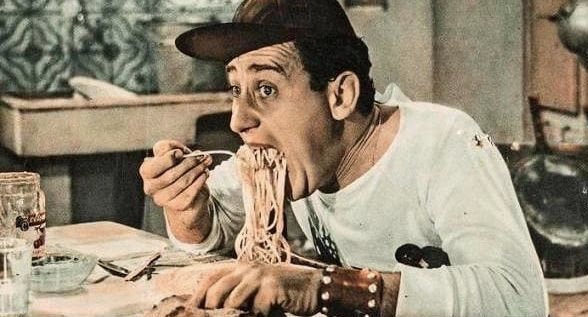Italy’s food culture is unique in many ways. From their passion with slow food, to the diversity of their cuisine varying from one region to an other, and often from town to town. Food and eating together is the reason why Italians exists.
Life, relationships, family and even work often revolve around the table. Food is to Italians what the heart is to our body. Without it it’s society would die. Everything is planned around that. Although eating is important, just as important are the Italian etiquette around food and restaurants. often quite different from North America.
No Need to Tip
1- Unlike in North America where staffing is inexpensive because we expect the restaurant goers to pay for the hired help with tips, in Italy the servers and cooks have a set labour contract. Their wages are completely covered so you don’t need to tip. It’s never expected, but if you like to, it’s a minimal amount.
When is the Best Time to Eat?
2- Restaurants are not always open ready to serve anytime you feel hungry, unless you are in a tourist infested area. Restaurants tend to open just before noon and stay open until 2:30 PM or so. In some cases, they don’t take tables past 2:00 PM.
They re-open again later around 7 o’clock in the evening and dinners are served until late. It all depends on the location; downtown, suburbs, big cities, small towns or high traffic areas on highways
. The seasons also play a big role in when restaurants open and close. Most places are closed one day, some two days of the week, usually Monday, Tuesday but also Wednesday or Thursday.
That Seems like a lot of Food
3- Italians eat in courses at both lunch or dinner. They’ll have at least two plus the caffe.
Antipasti. (appetizers) Not to be confused with aperitivi.
Primi. (first dishes) usually those are starches, such pasta or risotto or soup.
Secondi. (second dishes) tent to be meats, fish. Often you would receive the meat by itself with no sides.
Contorni. (side dishes) Arrive with you secondi maybe salads, steamed and cooked vegetables or fries, etc. etc. These are brought on different plates.
Formaggi (cheeses) Usually this will be a selection of local cheeses.
Dolci. (dessert)
Frutta. (fruit) It is common to finish with fresh fruit. And last but not least…
Caffè. This is always an espresso and sometime it’s corretto which means that grappa or another kind of liquor is added to the caffè. Never ever order a cappuccino or a macchiato at end of meal. It’s frowned upon.
Cover Charge?… for What?
4- Coperto is a cover charge for each person sitting down having dinner. This varies from 1 to even 5 Euros or so depending on the type of restaurant. A pizzeria is usually 1 to 2€ for instance. Osterie style restaurants may not even have one. High-end restaurants will be more. The charge goes back to the medieval days when the inns would charge for using the place when customers would bring their own food and just used the inn as a refuge from the weather. The cover is for the linen, cutlery and bread. This would be posted on the menu so there are no surprises.
Free Food?
5- Aperitivi are not antipasti, so if you drop in at a bar around 6 o’clock or so you can go for a aperitivo and in most cases food is served with it free of charge. Yes, the food is free, as long as you buy a drink. Some bars (bars in Italy are cafés or wine tasting shops) offer apercena, which translated is aper (aperitif) and cena (dinner).
Here you can literally eat to your heart’s desire and all you pay for is your drinks. Often you do this standing up and/or outside the bar in the street while wandering in and out sampling and eating finger food and chatting the night away. I recommend finding at least one of these places while you are traveling. It’s a great way to see the Italian dolce vita at work while sampling different dishes and wines. Here you pay before you eat.
BONUS…
You must always ask for the bill, as waiters will not bring it to you automatically at the end of your meal. It would be considered extremely rude to do that. The reasoning behind this is that the evening is not finished just because the food is. Italians often stay and talk for hours after the caffè and only when they are ready to leave they ask ( by a hand wave) the bill.
DOUBLE BONUS…
Lately all over Italy and mostly in the larger cities a new phenomenon is occurring.
Restaurants where the “ imbonitori” stand outside and invite you in. You’ve seen them in the Latin Quarters in Paris and there they belong. But in Italy…No thank you! Often these hosts offer a free appetizer or a drink (but you will pay for it in other ways) to entice you to enter. They may even tell you that they serve the best pasta in town.
It’s pretty obvious that these are only really inviting tourist as regular restaurant goers would never think of being duped by these individuals. If they need to ” invite”, the food is usually not that good. Even Italian tourists in their own country would never go here so why should you?
AVOID at all cost these places. Stay clear. But, if you do go, you then lose the right to complain that you’ve been to Italy and the food was terrible. You have been warned.
“Uomo avvisato mezzo salvato”.
Translation : Man that has been warned, is a man half saved”
‘Till then… Buon Viaggio!
Are you travelling to Italy and are interested in my assistance, or would like to comment on my post? Just drop a line below or contact me privately at info@italiabound.com.


